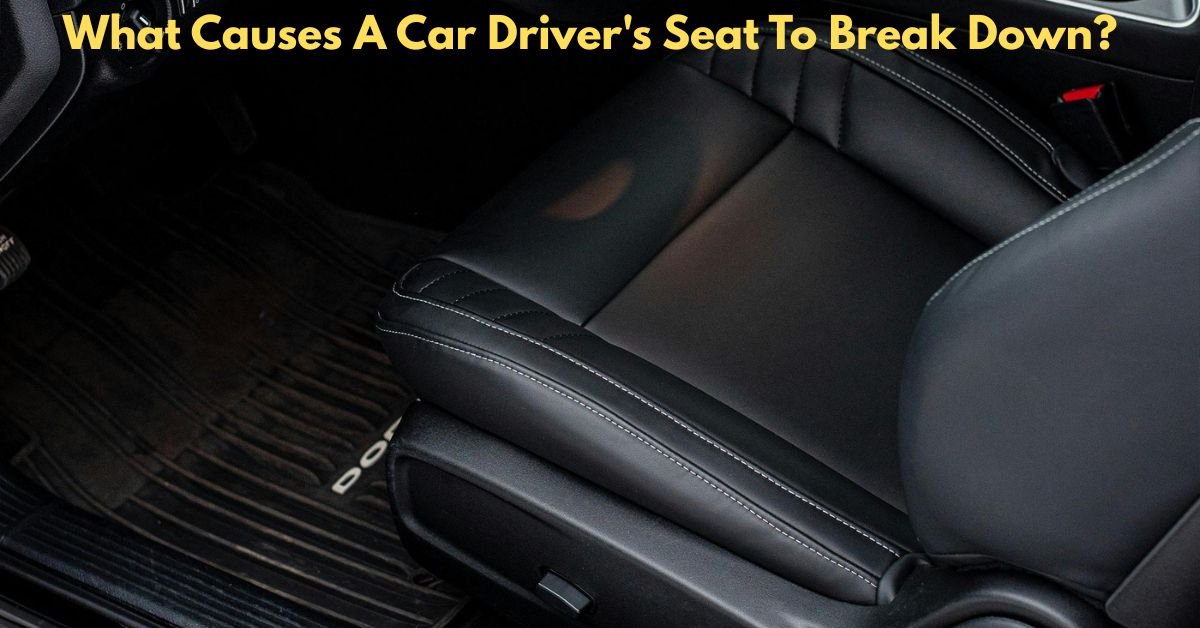The driver’s seat is one of the most heavily used parts of any vehicle. Whether you’re commuting daily, going on long road trips, or simply running errands around town, this seat experiences repeated stress and wear over time. But what exactly causes a car driver’s seat to break down? From mechanical failures to material fatigue, several factors contribute to the deterioration of a driver’s seat. You may extend the life of your car’s interior and prevent damage by being aware of them.
What Causes a Car Driver’s Seat to Break Down?
1. Frequent Use and Repeated Stress
The most obvious factor is simple wear and tear. Unlike the passenger seats, the driver’s seat is used nearly every time the car is in motion. Every time a driver gets in or out, it puts stress on the seat’s structure, cushion, and upholstery. Over time, this constant pressure leads to sagging, creaking, or even broken support frames.
In particular, getting in and out of the vehicle can stress the side bolsters (the side parts of the seat), which often start to lose their shape or firmness before the rest of the seat.
2. Poor Quality Materials
Not all car seats are created equal. Economy vehicles or older models may use less durable materials in their seats—both in terms of upholstery and internal support. Low-grade foam can break down more quickly, losing its ability to provide adequate support and comfort. Similarly, cheaper fabrics or synthetic leathers are more prone to cracking, tearing, or fading under constant use and exposure to sunlight.
3. Improper Seat Adjustments
Power-adjustable seats are a great convenience, but overuse or misuse can contribute to seat malfunction. Continuously adjusting the seat back and forth, or reclining it excessively, can wear out the motor or mechanical components. In manual seats, forcing the seat adjustments or neglecting to lubricate the rails can cause them to jam or fail altogether.
4. Weight and Load Capacity
Car seats are designed with a specific load capacity in mind. While they can generally support a wide range of body types, excessive weight can accelerate wear on the cushion and frame. Over time, this may cause sagging or a permanent indentation in the seat padding. In extreme cases, the frame could bend or break, making the seat uncomfortable or unsafe.
Must Read: Will A Bad CV Axle Cause Steering Wheel To Shake?

5. Environmental Exposure
Heat, cold, and UV rays can significantly affect a car seat’s longevity. Direct sunlight can cause leather or vinyl surfaces to dry up and fracture, as well as fade fabrics. In colder climates, freezing temperatures can make seat materials brittle and more prone to cracking or tearing, especially if the materials have already started to age. Moisture from rain-soaked clothing or spills can also degrade the foam and promote mold or mildew buildup.
6. Spills and Stains
Food, drinks, and other spills can stain the upholstery and soak into the seat padding. This not only affects the appearance of the seat but can also lead to bad odors and the breakdown of the inner materials. Over time, the foam can become saturated and lose its structure, contributing to a sunken or uneven seating surface.
7. Lack of Maintenance
Just like the rest of your vehicle, your driver’s seat needs regular care. Failing to clean, condition, or inspect your seats can lead to premature wear. Leather seats, in particular, require conditioning to stay soft and crack-free. Even fabric seats benefit from occasional deep cleaning to remove grime and preserve their color and texture.
8. Accidents or Structural Damage
In some cases, seat damage may not come from normal wear but from an impact, such as during a car accident. A sudden force can bend or break the internal frame of the seat, affect the seatbelt anchors, or damage the recline mechanism. Even a minor collision can have hidden effects on the driver’s seat structure, which may not be obvious until discomfort or shifting begins during driving.
Conclusion
While it’s easy to take your car seat for granted, its condition directly impacts your comfort, posture, and even driving safety. Being aware of the causes behind seat deterioration can help you take preventative steps, such as regular cleaning, using seat covers, limiting unnecessary adjustments, and getting prompt repairs when problems arise. After all, a well-maintained driver’s seat isn’t just a luxury—it’s an investment in your daily driving experience.
